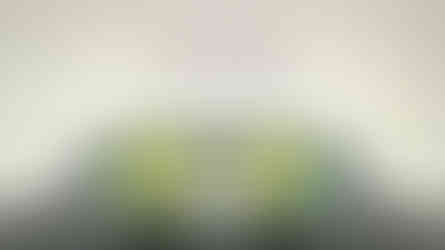Oakley Prizm Field Sunglasses Lens Review
- Sunglass Science
- Aug 19
- 8 min read
Updated: Nov 4
The Prizm Sport collection by Oakley includes lenses designed specifically for various sports activities. The Prizm Field lens was designed to thrive specifically in bright baseball/ball sports conditions, and it is among the darkest sport lenses Oakley makes. Let me explain.
Check out the Prizm Field lens on Oakley or at SportRx (use code SCIENCE10 for $10 off your purchase at SportRx).

If you want to know more about how rose lenses work, click here.
In This Review
Lens Specs | Oakley Prizm Field |
Technology | Prizm |
Lens Color | Rose |
Mirror Color | Red |
VLT | 15% |
ABBE | 30 |
Coatings | Mirror Coating |
Material | Plutonite (Polycarbonate) |
Weight | Light |
Scratch Resistance | Low |
Prescription Available | Yes |
3 |

To explore Oakley Prizm lenses in detail, including their specifications and main features, visit
It includes essential information such as lens coatings, impact resistance, scratch resistance, and maintenance tips, vital considerations due to Prizm lenses' limited coatings and reduced scratch resistance.
Prizm Field is a non-polarized lens, which is better for ball sports, explained here.
To learn more about why Prizm lenses are great for sports, see here for an in-depth look.
Prizm Field has a VLT of 15%, which officially makes it a Category 3 lens.
Is it eligible for prescription?
Yes. For all Oakley Prescription needs, check out SportRx, the best place to get Oakley. Use code Science10 for $10 off your purchase.
How does the lens look?
The front has a red mirror that has yellow highlights towards the sides of the lens.

The tint is a rose hue that leans violet, as this is a bluer and cooler rose than some of the other Prizm Sport lenses. We will compare tints below.

What does the view look like?
The Prizm Field lens is a dark, rose/purple tint, and does not have any hint of brown in it.
This causes the lens to feel less natural to look through until you adjust, and it takes longer to get used to. It offers a significant color enhancement with a warm and vibrant rose appearance.
I highly recommend reading about how rose lenses work to understand why such a strong tint doesn't make the view overwhelmingly red but rather resembles an enhanced grey lens.
As discussed in that post, the view will initially have a strong red cast for approximately two minutes until our eyes and brains acclimate. Simply wear them for a few minutes, and you'll experience the magic of a rose lens. I often find that it takes me longer to adjust to this lens compared to other rose lenses. That means the view will be strange and unpleasant for a few moments, but just keep them on, and it will be worth it.
Rose lenses amplify red hues and deepen blues. They block more green light, but since our eyes are especially sensitive to green, this creates a balanced brightness of colors. The overall view becomes warmer with a redder tint, enhancing colors. Blues appear darker, and greens are highlighted with greater contrast.
The visible light transmission (VLT) of the lens is 15%, which is a category 3 lens. This makes it different from most other Prizm Sport lenses that are lighter, 20%-35% VLT, and that is the key detail about this lens.
For lenses intended for practical applications such as sports, enhancing the brightness of the view is advantageous (which is why numerous Oakley Sport lenses feature a higher VLT).
In the context of sports and performance activities, many people believe that darker lenses with low VLT (8-15%) are superior because they block more sunlight. However, for fast-paced, high-performance activities, a higher VLT, typically between 15-25%, can provide important advantages. These lenses allow more light to enter, which is crucial for quickly and accurately processing visual information. In sports, every fraction of a second is vital, and the more visual input your eyes can receive, the better your reaction time, depth perception, and ability to track moving objects.
Since this lens is 15%, which is standard for most regular sunglasses (think Ray-Ban G15 lens), it does not have that higher VLT advantage. But it has two advantages over the lighter lenses.
1) It can be used for sports in very bright overhead sunlight and be comfortable, something the lighter tints struggle with.
2) It can be used as regular sunglasses when the other tints are too bright for standard beach or bright driving conditions.
In that sense, this is a bit of a compromise lens, a bit too dark to be ideal for most sports when not in very bright conditions, but holds it own because of the rose lens with added color enhancement.
The tint is not uniform across the lens and changes color towards the edges, like some other mirrored Prism lenses can do. The tint becomes bluer towards the edges in the periphery, but I don't find this to be that noticeable or a problem.
Sunny Conditions
These photos are what Oakley and other sources have used to show the view. Keep in mind that photos will never look as good as the real view looking through the sunglasses with your own eyes.




All of these are trying to show the views and aren't that far off, but I don't think they do a great job.
Here is my simulation of how the lens looks:


The view is comfortable, not bright at all, but the colors are vibrant, warm, and make seeing the ball and lines so much easier. Contrast that with a grey lens that is better than nothing, but a big step behind the Field lens.

Cloudy Conditions
The Field lens struggles a bit in overcast conditions because of how dark the tint is. It does still enhance contrast and colors, but not as much as you might want.



The Prizm Dark Golf with its higher VLT handles these conditions much better.

Optimal and Suboptimal Viewing Conditions
To me, this lens is for very sunny conditions only. It doesn't perform as well when there are many clouds in the sky, though it is fine.
Do not feel trapped by the marketing. There is no magic that makes this lens perfect for baseball and not other sports. And that is true the other way too, other lenses will perform better for baseball in the right conditions. Is it good for bright baseball conditions? Yes, but for the reasons I explain in this post about Oakley's sport lenses, not because of any special baseball filter in the lens.
In my opinion, the Dark Golf lens beats this lens in almost every situation except the brightest conditions, so if you had to pick one of these lenses from Oakley, the consideration would be like this: Do you need a lens for consistently bright and clear conditions? Then go for the Field. Do you want the lens to double as a regular pair of sunglasses and not just for sports, where you want a higher VLT? Then go for the Field. Otherwise, go for the Dark Golf.
I own both, and to be honest, I do not really wear the Field lens much because of the Dark Golf. Even in full sun, when I play tennis or baseball, I prefer the Dark Golf. However, I gave an extra pair of the Fields I had to my brother-in-law for tennis, and he loved them. If you do not know something better is out there, then you will probably enjoy these.
The Field will work well in the winter when rose lenses generally perform better.

Comparison to the same brand - Oakley
Oakley Prizm Dark Golf
It is hard to describe the differences between these lenses. The Field lens is a darker and cooler lens, while the Dark Golf lens is a rose lens that leans towards brown, and is a warmer and lighter lens. I mentioned above in this review some of the differences and included a picture comparison in the overcast section. The Dark Golf is more versatile, better for most sports, nicer looking, but doesn't perform as well in very bright conditions and will not work as well as regular dark sunglasses.
Oakley Prizm Golf
Prizm Golf has a similar tint profile to Field, but is much lighter. A 15% vs 30% VLT is twice as bright. It has much more color "pop" and takes around as long to adjust to, but is bordering on uncomfortable in very bright conditions, where you would want something like the Field.
Oakley Prizm Ruby
Prizm Ruby is a red-mirrored variation of the Tungsten lens, designed to reflect red light and bring the view closer to a neutral balance. The result is stunning, with colors enhanced more than Prizm Black or Sapphire but without the exaggerated vibrancy of Tungsten. The visual experience is widely appreciated, though the bold aesthetic of the red mirror lens might not appeal to everyone.
I think the Prizm Ruby is the best non-rose sport lens that Oakley makes, and I would recommend it to anyone who doesn't like rose (even once they have tried it properly).
Prizm Ruby was my introduction to the world of premium sunglass lenses, and its performance left a lasting impression. It strikes an excellent balance between color enhancement and natural tones, making it a versatile and visually impressive option.
Comparison to the Rose Lenses of Different Brands
Serengeti Sedona
The Serengeti Sedona is a more intense rose view than the Prizm Field, and is around the same darkness, though it is mildly photochromic, so it will be slightly lighter or darker depending on how activated by UV light it is. It comes in glass, with all coatings, and is polarized. One of the best overall rose lenses.
See here for the full review. Check it out on Serengeti's website. Use code SUNSCIENCE30 for 30% off.
Dita Lancier Land
The Dita Lancier Land lens is a phenomenal lens geared towards driving, all conditions, and great views. It is a rose lens with a bit of brown to it, a relatively dark 13.4% VLT, and is polarized. The lens material is lightweight nylon. Unlike other rose or brown lenses that can throw the normal color balance off, the Land lens brightens and enhances all colors while keeping the colors feeling normal, especially the sky (which is rare for a rose or brown lens). This is the best all-around lens in the Lancier collection, and arguably any other collection. It is a very similar tint to the Dark Golf lens mentioned above, but darker, polarized, with all coatings, and super classy.
Maui Jim MauiRose
The MauiRose is more saturated and even darker than the Prizm Field. It will give a more intense view and will feel “hotter” than Oakley. The MauiRose comes in several materials, including glass, and is fully coated. Like some of the other rose lenses here, it leans more brown compared to the cooler field (not that it is brown).
See here for the full MauiRose review. Click here to see on Maui Jim's Website.
Island Optics Green Mirror
An amazing budget option, this lens is similar in tint to the MauiRose lens, without some of the amazing tech added, but at a fraction of the cost. Poly lenses that are fully coated. You can check out Island Optics here.
Conclusion - Oakley Prizm Field Lens Review - Should you buy it?
The Oakley Prizm Field lens is best for athletes who play in consistently bright, sunny conditions. With its dark 15% VLT rose tint and red mirror, it provides excellent contrast and makes tracking a ball against the sky or field much easier. However, it’s less versatile than other Oakley sport lenses like Prizm Dark Golf, which performs better in variable lighting. If you want a dedicated lens for baseball, softball, or other outdoor sports under intense sun, and one that can double as standard sunglasses, the Prizm Field is a solid choice. Otherwise, lighter Prizm Sport lenses may serve you better.




















Comments